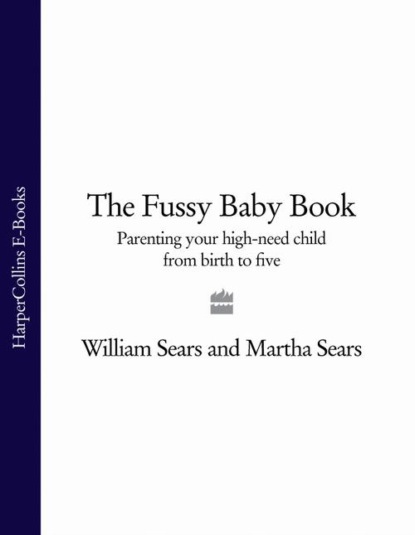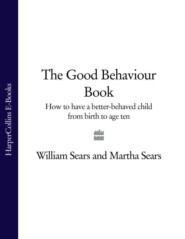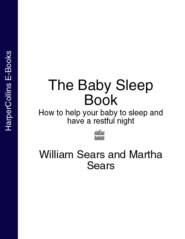По всем вопросам обращайтесь на: info@litportal.ru
(©) 2003-2024.
✖
The Fussy Baby Book: Parenting your high-need child from birth to five
Автор
Год написания книги
2018
Настройки чтения
Размер шрифта
Высота строк
Поля
sucking to soothe
Since babies start sucking while in the womb, they are born relating sucking to soothing. That is one reason why they are so eager to suck right after birth, whether they find a breast or their hands. They need soothing after their wild ride down the birth canal. Mothers intuitively offer sucking to a fussy baby, and it usually works like a charm.
The distressed infant can now pick from a wide array of ever-changing scenery, select what delights him, and shut out what disturbs him. And seen from such a secure perch, even the disturbing sights soon become interesting rather than frightening. You don’t have to focus on bringing artificial sights to baby’s face. Just your going about your business and varying your movements and environment as you do is enough stimulation for most babies.
Instant replay. The expanding mind of a growing infant is like a video library containing thousands of tapes. These tapes record behaviour patterns that baby has learned to anticipate as either soothing or disturbing. Babywearing mothers tell us, “As soon as I put on the sling, my baby’s face lights up with delight, and he stops fussing.” The scene of mother putting on the sling triggers a replay in baby’s mind of all the pleasant moments she’s experienced in mother’s arms, and she can anticipate the pleasant interaction that is soon to follow. She stops fussing. She’s no longer bored.
Makes life easier for parents. Not only is babywearing good for the infant, it’s good for the mother as well. The carrier gives you a comforting tool that usually works. After baby gets used to being worn and you get used to wearing baby, you have more options and more mobility. You’ll feel as though you’ve gained an extra pair of hands, especially around the house, and you can go more places. Baby is content, since “home” to a tiny baby is being with mum, even though mum may be in the middle of a busy shopping centre or at a party full of adults.
A baby who fusses less is more fun to be with and drains less energy from the parents. Infants and parents can then direct the energy they would have wasted on managing fussing into growing and interacting. That’s why carried babies thrive – as do their parents.
Familiarity breeds content. Living in a carrier keeps infants content because it keeps them in constant contact with the familiar sounds, touches, movements, and visual delights of their parents. Being nestled in a familiar position is especially calming for the baby who is easily distracted and falls apart at the first sight of a strange person or a strange place. The worn baby is always surrounded by things he knows. From this secure base, the baby has less fear of the unfamiliar – and adjusts without a fuss.
Proximity fosters calmness. A baby who is worn is in mother’s arms and literally right under her face. With this close proximity, mother can teach baby to cry “better”. As soon as baby gives a hint that he is about to fuss, mother, because she is right there, can pre-empt the cry or keep it from escalating into an all-out fit. Being close to your baby helps you learn to read your baby’s pre-cry signals so that you can intervene to meet baby’s needs before he has to fuss. Baby in turn learns to be more at ease using non-crying modes of signalling since, during baby-wearing, he has learned that these signals receive an immediate nurturing response.
Sling time for stress time. Once each of our sling babies (Matthew, Stephen, and Lauren) was past the “fussy toddler hanging on to mum’s leg” stage, we would pack up our slings, thankful that he or she had matured out of needing to be carried around for long stretches of time. However, we kept one sling handy for those times, even at two and a half or three years, when a certain type of misbehaviour would signal us that instead of “time out” what was needed was “time in”. Time in the sling could transform a stressed child into one who would be back to playing pleasantly in ten minutes. Legs were a bit longer, but the little one would snuggle gratefully into the once-familiar position on Martha’s hip. Somehow finding that this place was still available seemed to be all the child needed to get back on an even keel. And Martha was grateful that she could comfort a distressed child with relatively little effort.
Babywearing and daycare. Carrie had a high-need baby who was content as long as she was in a sling, but Carrie had to return to work when Mary was six weeks of age. I wrote the following “prescription” to give to her daycare provider:
How to wear your baby in a sling. Some mothers take to babywearing like a duck takes to water; others may initially find the sling awkward. Also, some babies at first have difficulty settling in the sling. Perhaps they find it too confining. For the best long-term results, get your baby used to being worn in the first week, so that she soon realizes that the sling is where she belongs. It takes some practice, but the sling will soon become your norm of infant care. Take lessons from veteran parents who have logged many miles wearing their babies in a sling in various carrying positions and in many circumstances. Find one of these experts to show you how to wear the sling so it’s most comfortable for you and most settling for baby. Keep experimenting with various positions until you find one that works; the favourite position may change with baby’s moods and motor development. Most high-need babies prefer to be carried in the forward-facing position (see figure opposite).
For a busy parent of a fussy infant, a baby sling will be one of your most indispensable infant-care items. You won’t get dressed without it.
I thought I would definitely have a baby who slept through the night, in his cot, in his room, and that he would awake only to feed and for nappy changes. How naive! Jason knew what kind of parenting he needed right from the start. He was truly a fussy baby, and we nicknamed him “More”. He screamed if I put him down even to get dressed. He seemed to nurse constantly, and he rarely slept. As long as he was in my arms or nestled on my husband’s chest, he was content, happy, and alert. Any deviation from that was a disaster for everyone. A friend of mine recommended a baby sling so that I could have my hands free to do other things and not begin to feel resentful of all the time a baby takes up. The sling was our saviour! I loved carrying him, and it allowed me to get other things done. The sling ended the pass-the-baby-around sport that so many parents have accepted as just the way things are. There is no way Jason would have stood for being bounced around from person to person for an entire day. An added benefit of the sling was that he was able to feed anywhere and everywhere while in the sling. We went everywhere with him – weddings, funerals, dinners, grocery shopping, doctor visits, vacations, everywhere. Christmas shopping with Jason in the sling was a breeze. I can’t imagine how mothers can manoeuvre buggies through the narrow aisles in most shops. Everywhere we went people remarked how wonderful my baby was. I always pointed out that since my child felt right and was getting his needs met, he really had no reason to be upset.
Вы ознакомились с фрагментом книги.
Приобретайте полный текст книги у нашего партнера:
Приобретайте полный текст книги у нашего партнера:







